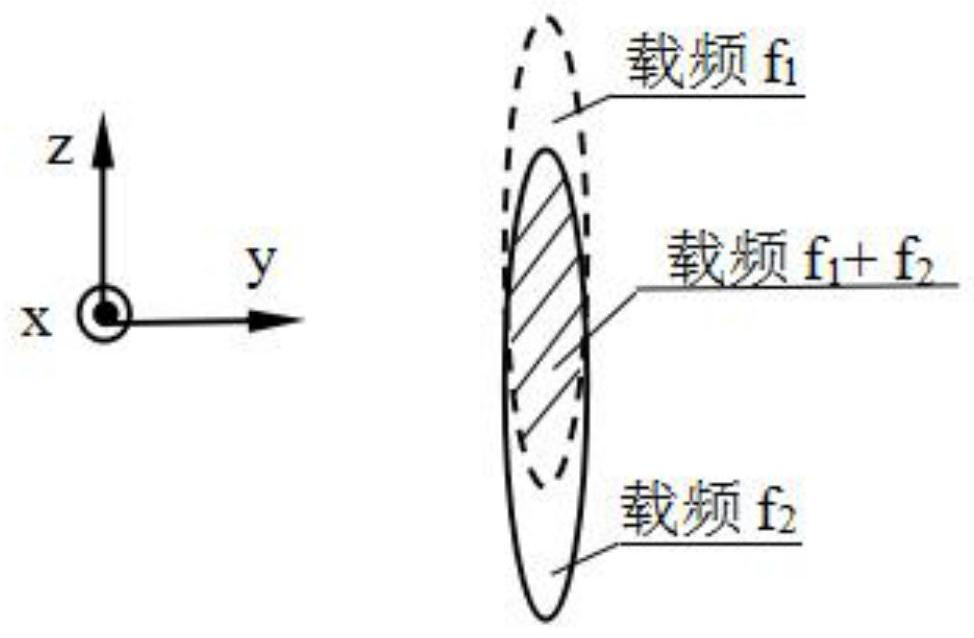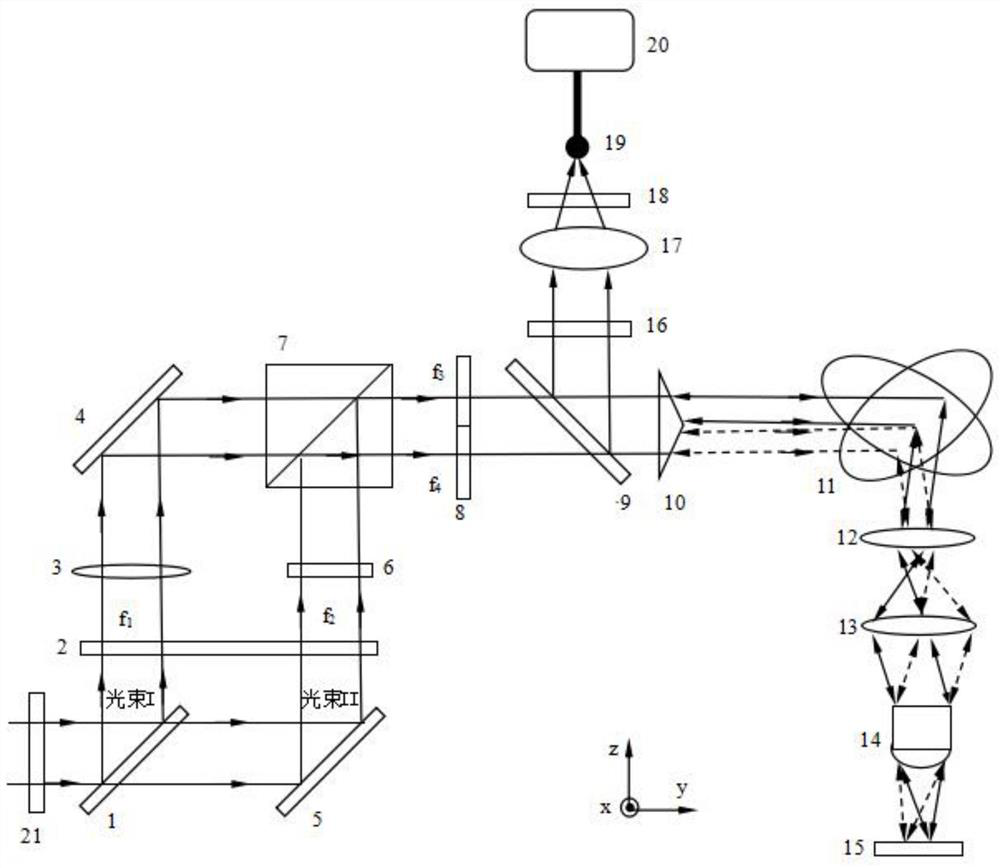High-speed Raman spectroscopy scanning imaging method and device with three-dimensional high spatial resolution
A high spatial resolution, Raman spectroscopy technology, applied in Raman scattering, material excitation analysis, etc., can solve the problem of image lateral resolution and axial resolution improvement, Raman spectroscopy imaging speed is slow, point-by-point scanning time Long and other problems, to achieve the effect of eliminating stray light, improving the speed of multi-focus scanning imaging, and good monochromaticity
- Summary
- Abstract
- Description
- Claims
- Application Information
AI Technical Summary
Problems solved by technology
Method used
Image
Examples
Embodiment 1
[0047] If the optical system is illuminated by linearly polarized coherent light, for a high numerical aperture optical system, the distribution of focused spots on the focal plane is significantly affected by the polarization characteristics of the illuminating light. like figure 1 As shown, if linearly polarized coherent light in the y direction is used for illumination, the focused spot on the focal plane is distributed in an ellipse, and the minor axis of the ellipse is perpendicular to the direction of the linearly polarized light (the y direction at this time), that is, the ellipse at this time The minor axis direction is along the x direction. If linearly polarized coherent light in the x direction is used for illumination, the short axis direction of the elliptical focused spot on the focal plane is along the y direction. The lateral resolution of the optical system depends on the size of the focused spot. Obviously, if the linearly polarized coherent light in the y ...
Embodiment 2
[0086] like Figure 5 As shown, the incident light g and the refracted light are g1 and g2, if the included angles between the two facets m1 and m2 of the prism 8 and the bottom surface are respectively θ 1 and θ 2 , the refractive index of the prism 9 is n, then the angle between the refracted light g1 of the facet m1 and the first optical axis (z axis) can be obtained as θ 1 '=asin(nsinθ 1 -θ 1 ),like Image 6 As shown, the distance h from the focused spot A to the fifth optical axis (x-axis) 1 =fsin[asin(nsinθ 1 -θ 1 )], where f is the focal length of the focusing objective lens 2. Similarly, the distance h from the focused spot B to the fifth optical axis 2 =fsin[asin(nsinθ 2 -θ 2 )]. Therefore, the position of the focused spot can be precisely controlled by the refractive index n of the prism, the angles between the facets m1 , m2 and the z-axis, and the focal length f of the focusing lens 13 . If the planes m1 and m2 are asymmetrical about the first optical a...
Embodiment 3
[0088] This embodiment is the same as other structures and settings in Embodiment 1, except that the polyhedral prism has been replaced by Figure 7 Polyhedral prism shown at center left. The polyhedral prism is a tetrahedron cylinder prism with a bottom surface and three prisms, and the three prisms are arranged symmetrically along the first optical axis.
[0089] In this embodiment, the focus spot distribution is as follows: on the sample 15, such as Figure 7 The three focused spots on the middle right are aligned along the y-axis in the xy-plane. If the facet is perpendicular to the light beam g and arranged symmetrically along the first optical axis, the focused light spot obtained by passing through the facet is on the origin of the coordinate axis.
[0090] Further, assuming that the confocal scanning imaging finally needs to obtain an image of n rows and n columns, and the polyhedral prism of this embodiment is used to generate 3 points of column distribution focal p...
PUM
 Login to View More
Login to View More Abstract
Description
Claims
Application Information
 Login to View More
Login to View More - R&D
- Intellectual Property
- Life Sciences
- Materials
- Tech Scout
- Unparalleled Data Quality
- Higher Quality Content
- 60% Fewer Hallucinations
Browse by: Latest US Patents, China's latest patents, Technical Efficacy Thesaurus, Application Domain, Technology Topic, Popular Technical Reports.
© 2025 PatSnap. All rights reserved.Legal|Privacy policy|Modern Slavery Act Transparency Statement|Sitemap|About US| Contact US: help@patsnap.com



